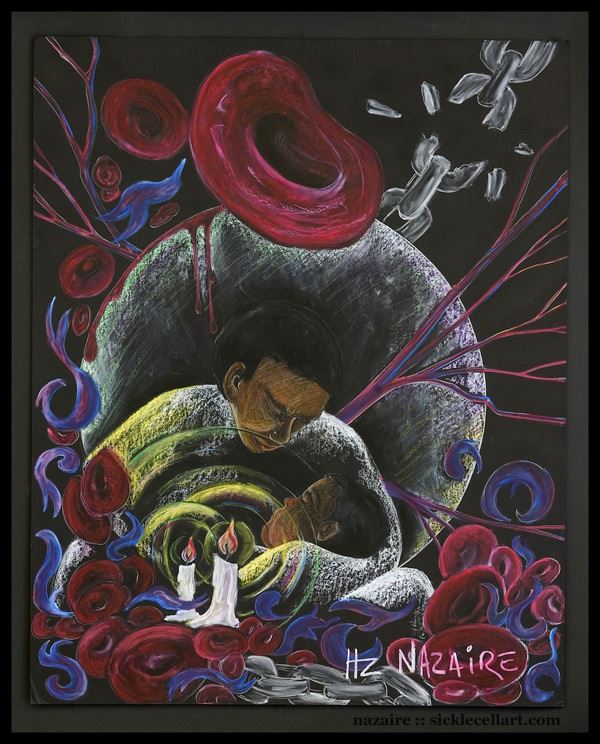On Friday, I attended a conference about sickle cell disease at Children’s Hospital in Los Angeles. Sitting in a crowd of leading experts in the field, both from the medical community as well as patients and families living with the harsh reality of the disease – I had the unique role to represent both as a nurse and mom.
Polished powerpoint slides were shown to demonstrate the progresses which have been made as well as the devastating realities that still exist for people living with sickle cell disease. There were common stories told of indescribable pain and the struggles that continue for so many to access quality care for their disease. Statistics were mentioned in several presentations in regard to sickle cell in Sub-Saharan Africa. All were dismal. For most, I imagine, it represented not much more than unfortunate, unchangeable numbers representing a place far, far away. The statistics were these:
- More than 75% of the global burden of Sickle Cell Disease occurs in Sub-Saharan Africa;
- In Africa, 1,000 children are born with Sickle Cell Disease every day;
- 80% of children with Sickle Cell Disease in Sub-Saharan Africa die by the age of two.
For me, these numbers represent something very personal. I don’t know how to put it, except to say: I have come to know them by heart.
I still can hear Ryan’s screaming cries from when he was a six month old baby. He was so little, and I felt so helpless. Maybe naively, but I did not suspect the diagnosis that would make sense for all his pain,
I still am able to see Alice in the backseat of our car as we drove the bumpy dirt roads trying to get her help. She was writing from the pain, hot with fever and struggling to find her breath. She needed a kind of treatment that is so hard to find in our parts of the world.
I still can feel Geoffrey’s limp body resting against mine. Infection. Acute chest syndrome. A kind of pain that no band-aid will fix. He had already stroked by the age of two.
Two years ago, unbeknownst to me, I was invited into a journey that would be marked by deep love and deep suffering. It has been the hardest privilege of my life.
One year ago, on September 18th, against all sorts of odds, Titus and I were able to temporarily relocate our family to the States for Geoffrey and Ryan to have their bone marrow transplants. Their sister’s 10/10 match was the rare “golden ticket” that so many affected by this disease wish they could find. I listened to presentation after presentation on Friday with a sense of awe and wonder. As grueling as this transplant season has been, God has delivered our boys from sickle cell disease. A gift I will forever be grateful for.
And with the same breath, I hold the struggle that remains for Alice to survive. I feel the weight of suffering that exists for so many others we call our neighbors in Kenya. For many, they don’t have a name for their pain as a diagnosis is hard to come by. They don’t have access to simple medications that would improve the quality of their lives. The disparities that currently exist are simply unacceptable. And like the old World Vision prayer which says: “God break my heart for the things that break Yours,” I recognize that brokenness is necessary but is not the end. Rather, it seems to me it is often the pathway which makes space to prayerfully ask: So now what?

My,My,My…
LikeLike
Juli . . . what is ahead for Alice now?
LikeLike